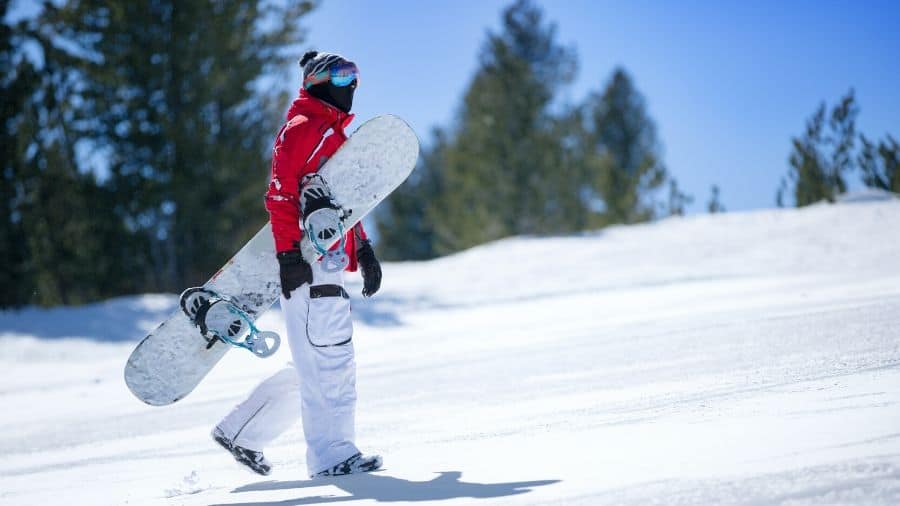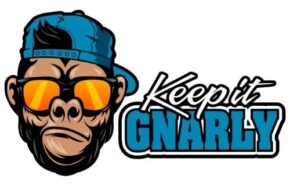
The question of whether or not a person needs a snowboard leash has people divided. You can try to keep googling the topic, but there is no definitive answer that is universally accepted. The question should really be broken down into – Do you need to have a snowboard leash or do you have to have a snowboard leash? After reading this, you can draw your own conclusion on whether you need to be leashed in or not. The conclusion might just depend on whether you actually want to be allowed on the mountain.
A person does not need a snowboard leash to be able to snowboard. A snowboard leash does not help with learning to snowboard or to master any tricks. In fact, a snowboard leash is considered to be an outdated, impractical, and superfluous item of mountain gear. However, a snowboard leash is still required by some resorts in order to ride their chairlifts.
Snowboard leashes should now be as out-dated as wooden skis. The antiquated fear that a large, rectangular snowboard is going to propel down the mountain, wiping out everyone in its wake still exists in the minds of some (skiers). Below you will find more information about why this is the situation with modern snowboarding.
Table of Contents
When You Might Need a Snowboard Leash
A snowboard leash connects you to the snowboard itself and prevents your snowboard from careening away from you if it becomes detached.
Historically, snowboard bindings were liable to quick release. In the 1990s, when snowboarding really took off, snowboard bindings were simply altered ski bindings that weren’t fit for purpose. These old school, step-in bindings are uncommon nowadays, even with the generally sub-standard gear on offer in the rental shop. This issue of bindings releasing has long since been rectified with specifically engineered bindings tailored with snowboarders in mind.
Today most times that your board would detach is solely intentional, like when you are unclipping yourself from your board at the bottom of the mountain.
Logically, you are probably going to unclip your board on flat ground anyway. Nevertheless, resorts naturally want to limit their liability in any way possible.
Imagine the pay-out if your board detached and fell while you were up on the chairlift, which by the way, I have never heard of actually happening.
It is doubtful that anyone would intentionally detach a snowboard from themselves while relaxing on the chairlift above people heading down the slopes.
If you are at the top of the mountain and need to carry your board, then you will need to detach your leash in order to be able to do this, so again, why does a person need to buy a snowboard leash?
At the end of the day, lower insurance policy premiums mean bigger profits for resorts, and thus some resorts keep insisting that snowboard leashes are mandatory in case your board decides to magically take a spin on its own. If your local mountain requires a snowboard leash, then they likely need to hop in a time machine and set the dial back by twenty years.
For resorts where the ‘leash law’ is still in place, you may find lackadaisical chairlift attendants that don’t bother with enforcement since they likely know this rule is ridiculous.
The question remains as to why long pointy skis, that make the perfect projectile, don’t have to deal with this discrimination. The answer likely still comes down to the archaic reputation of the gentile skier vs the rebel snowboarder.
What is a Snowboard leash?
A snowboard leash is really just a basic cord that attaches from your snowboard binding to your person.
These cords come in various fabrics with some being like woven seatbelt material, and others being coiled, with a plastic coating like an old-school telephone wire. Each will come with a method of attaching the leash to yourself, be that by a clip or a Velcro strap.
A snowboard leash typically comes in one of two different styles: a short leash clips from your binding to you boot laces; whereas a long leash clips from your binding and wraps around your leg below your knee.
Newbies may think that you should wrap your long leash around your ankle, but don’t do this unless you enjoy getting tangled with random foliage or tripping over yourself and really looking like a bumbling neophyte.
The leash shouldn’t hinder your ability to snowboard but they are still rather purposeless. Long leashes are easier for the chairlift attendant to easily visualize, and as you’ll read below, this might be the main reason to wear one.
Why do I Need to Use a Snowboard leash?
I have devised a top ten list about why you may need to use a snowboard leash:
- It is considered to be good mountain etiquette (and your prim and proper self actually cares about this point, thank you very much)
- You want to spend money on a rather pointless snowboard gear
- You enjoy spending money on things that make others feel safer in your presence.
- You relish on being old-school and still use snowboard bindings from 1992
- You have a phobia of chasing your board down a mountain while yelling ‘incoming!’
- You tend to trip over when clipping into your biddings on flat ground
- You enjoy a small dose of frostbite and take pleasure in the act of taking your gloves off and on and off and on (and off and on) to attach and reattach your leash
- The resort you want to snowboard on says that you have to use a snowboard leash
- The chairlift that you want to go up is owned by the resort that says that you have to use a snowboard leash
- You do not have the innate ability to gauge when you are on an incline and if your board would slide away if you took it off.
- – BONUS – some snowboard leashes come with a built-in locking mechanism so that you can secure your board while at the lodge. This seems to be the most useful purpose of a snowboard leash, but you can also just buy a lock.
How do you Mount a Leash onto a Snowboard?
So you have decided to use a snowboard leash, or maybe your local mountain requires that you use one.
Now how are you meant to mount your snowboard leash? To start with, you will ideally want to connect your snowboard leash to your snowboard when you are at home and getting your gear ready.
If your resort insists that you use a leash, then the last thing that you want to do is forget to bring that small piece of cord as the resort will likely charge you an arm and a leg for the same equipment up at the resort shop.
Plus, it is always easier dealing with fiddly things when your fingers are warm and functional. It should go without saying, but you want to be sure to attach your snowboard leash before you get into your bindings.
First off, take the end that doesn’t have the clip (or Velcro or whatever type of attachment device you have) on it and feed it through the hole on the side of your snowboard binding.
Pull the cord through so that it comes up and over the binding. Then, put the clip through the loop that you have created so that you make a U knot on the binding.
Be sure to do this for your front foot, regardless of whether you board goofy or not, so that when you get off of the lift, you aren’t pushing off with your back foot that still has a leash attached.
A short leash type will attach to a metal loop that you put onto your snowboard boot laces. Some people prefer to clip their leash to the toggle on the back of your boots but this really seems to make the purpose of a snowboard leash even more invalid as there is no way that this toggle could support the weight of your board if it did actually get away from you.
The long leash type will wrap around your leg, below your knee. Be sure that the leash is on the outside of your snowboarding pants, and yes, we felt like we needed to explain that to some people.
Final Thoughts on Snowboarding Leashes
Compared to the price of the rest of your snowboarding gear, a leash is a relative bargain. However, you still shouldn’t need one.
Check with your local mountain and see if they require you to use one, but the chances are they will either be puzzled why you would ask or they aren’t really that fond of having snowboarders on their mountain.
After all, if an avalanche started, the last thing that you need is yet another hurdle to getting rid of your board as fast as humanly possible.
A favorite spot of mine is Whistler Resort in British Columbia, Canada, where they welcome boarders and you will go up the mountain in the relative luxury of a gondola, with your board safely tucked away on the outside rack.
